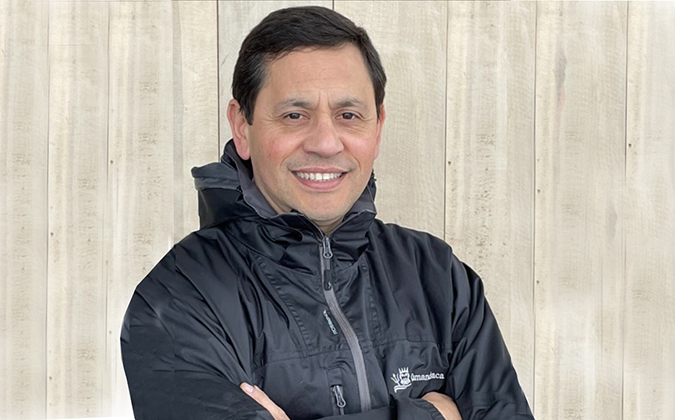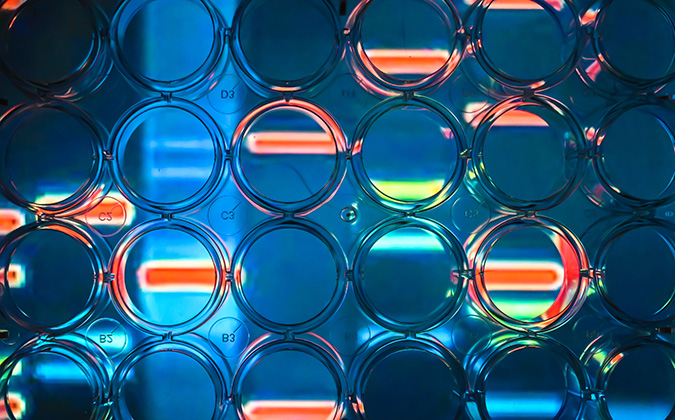
Cutting antibiotic use in Chile’s growing salmon sector
An interview with Francisco Vallejos, MV, deputy health manager for Camanchaca SA.
Q: Camanchaca has some ambitious aims around fish health and welfare. Where do the main priorities lie?
FV: Reducing use of antibiotics is a very important issue for us, especially for the sustainability of our production. We have developed an action plan to reduce the consumption of antibiotics in the coming years, based on three pillars.
The first pillar is the host, in this case our fish. We want to have the best sanitary performance by choosing the best genetics, achieving the highest smolt quality and, finally, selecting the best vaccines.
The second pillar is the environment. We need to have the best growing conditions for our fish. The issues here are stress control, especially related to sea lice problems, oxygen supply and managing the risk of the algal blooms.
Finally, the third pillar is the agent. Salmonid rickettsial septicemia (SRS) is a big issue, but in terms of mortality it’s only the fourth or fifth biggest problem for us. But it explains around 90% of the antibiotic use. To reduce this, surveillance and early diagnosis are very important.
Q: What results have you seen?
FV: Actually, we are very happy right now because this year we produced salmon on three sites entirely antibiotic free. It’s not been easy, but it’s an outcome of all the measures we put in place.
The reduction in antibiotic use overall is 35% this year — to around 300 grams per ton of fish produced. We have committed to the Monterey Bay Aquarium’s target of 50% reduction by 2025 and are well on track to meet that.
Q: You have reached a point where 100% of your fish are vaccinated against SRS, but it’s well-known that vaccines, no matter how well-designed, won’t perform to their optimum without other sanitary measures in place. How did you maximize the impact?
FV: SRS is very hard to control because the pathogen is an intracellular bacterium, so we needed to improve our tactics. Today, nobody has any doubts about the vaccines, but to improve the performance we looked at the environment, our practices and the skills of our people. We have put together a team of very enthusiastic and professional veterinarians, and the scientific method is the basis for all the decisions in our work.
Q: What role have experts outside the company played?
FV: We have a very close relationship with PHARMAQ, both the Norwegian and Chilean teams. It’s very fluid and helps us continue to improve our biosecurity measures through constant surveillance. We also have good relations with the authorities in Chile, having voluntarily taken steps to further reduce antibiotic use, in the course of meeting improved disease-surveillance and reporting requirements.
Q: Feeds are another area you have been looking at closely, but how does this contribute to fish health outcomes specifically?
FV: It’s an important component. We use functional feeds to improve the condition of our fish’s gills and help combat complex gill disease, reducing the impact of algal blooms and amoeba, and gill health probably improves the effectiveness of the vaccines we use. We also use feeds to help protect the liver and reduce the frequency of cataracts in fish.
Q: Sea lice remain a major issue for salmon producers in Chile and elsewhere. Can you explain the measures you use against them?
FV: We use the chitin inhibitor hexaflumuron (PHARMAQ Alpha Flux®), but on top of that, we do this with an innovative system called SalmoClinic. This is a ship which features a tank and helix system to allow enclosed, continuous treatment of salmon.
The technology was developed in Chile and means it’s possible to reduce the amount of the drugs you use for the treatment and to treat the drugs before they’re put in the sea, meaning it’s more environmentally sustainable. It’s a very interesting development, which Norwegian producers are now looking at. After this, we don’t use any other treatment over the whole production cycle.
Q: Looking at the freshwater stage, Camanchaca uses no antibiotics or antivirals. How do you achieve that?
FV: We have a closed system to production, so we have complete control over the genetics of the eggs and juvenile fish. Smolt are produced in a recirculating aquaculture system, where we have surveillance at every stage.
Q: It’s fair to say that genetics is a fundamental part of the fish health strategy, then?
FV: Yes, we have a dedicated department working on genomic selection, basically like Aquagen or Benchmark, but within the company. We also have the support of the Universidad Católica of Valparaiso, an important university in Chile. We select for different aspects such as performance and color, but disease is also very important — for example, looking for resistance to infectious pancreatic necrosis and SRS.
Q: Can you describe a few of the diagnostic approaches you use on sites?
FV: We use the latest approaches such as polymerase chain reaction testing or immunohistochemistry, and before we stock fish at sea sites, we use radiology to look for skeletal deformities or any other problems which might limit the fish’s success at sea. We always use the latest technology where we can, but more important is the competence of our teams.
Q: And how are you approaching welfare issues?
FV: Our welfare policy is very important in everything we do. We use a system by a Norwegian company called Aquabyte to monitor a number of welfare parameters using a system of three cameras in cages, and the footage is analyzed using artificial intelligence. We get data each week on things like sea lice counts, deformities and other physical aspects, which give us a good picture of the welfare of fish.
Q: Are there any emerging disease threats you can see on the horizon?
FV: I’d say tenacibaculosis, gill problems, and heart and skeletal muscle inflammation are the ones we are tracking most closely, though none of these are likely to have the same impact in terms of mortality as SRS once did.






